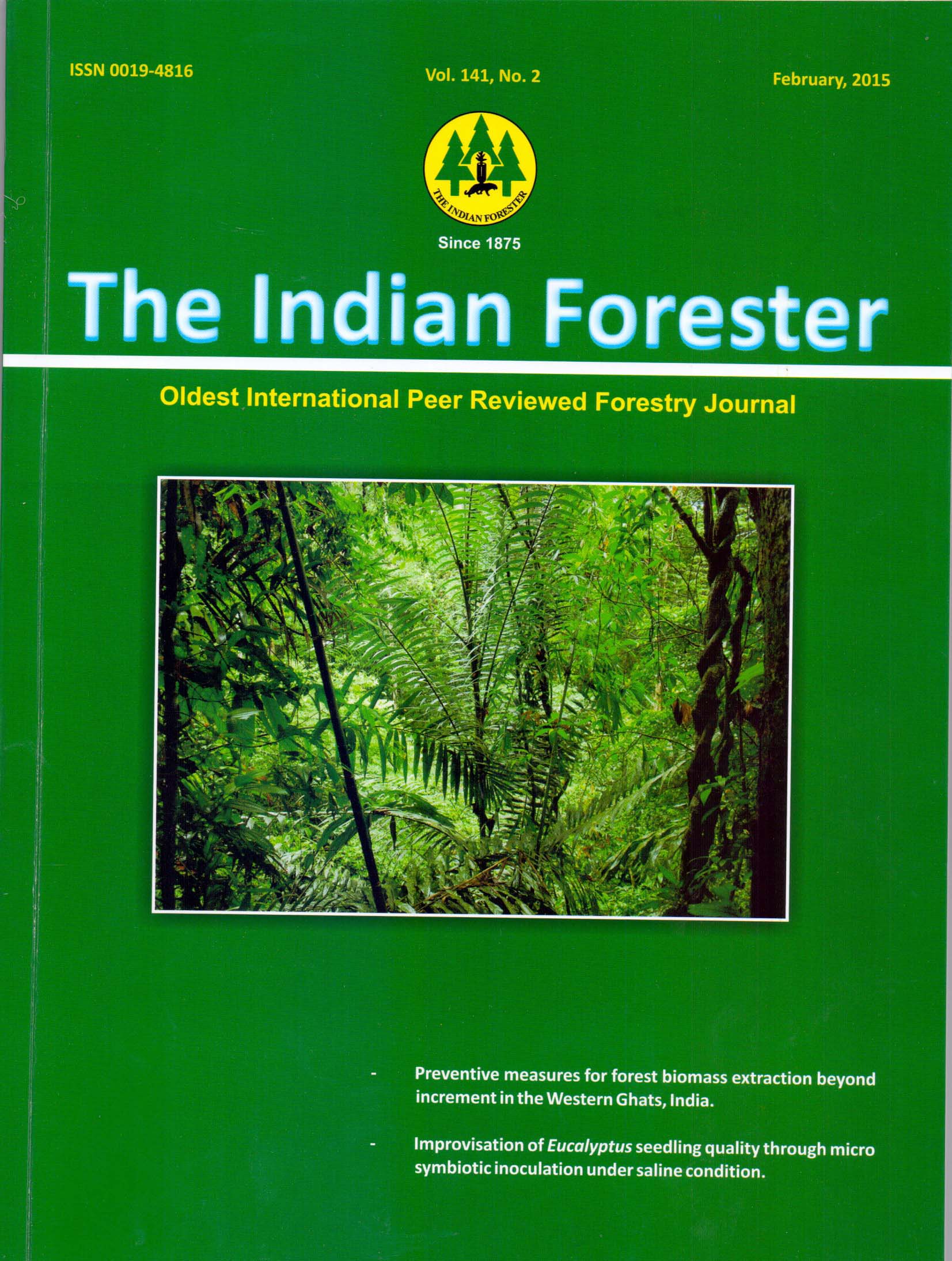Medicinal Plants of Cachar District of Assam Used by the 'Rongmai' Tribe
DOI:
https://doi.org/10.36808/if/2015/v141i2/60667Keywords:
Ethnic Group, Rongmai Tribe, Mashkall Village, Assam, Therapeutic Use.Abstract
An ethnobotanical survey of plants used by the 'Rongmai' tribe for the treatment of various diseases was carried out in the Mashkall village, Lakhipur sub-division of Cachar district of Assam. Information on the names of plants, part used and methods of preparation was collected through a questionnaire which was administered by the local herbalists, traditional healers and rural dwellers. Information collected has revealed 16 plant species belonging to 15 families have been found to be utilized for 48 diseases.References
Akerele O. (1988). Medicinal plants and primary health care: An agenda for action, Fitoterapia, 59: 355-363.
Borthakur S.K. (1997). Plants in the folklore and folk life of the Karbis (Mikirs) of Assam. In: Contribution of Indian Ethnobotany 2, Vol I, 2nd edn. (S.K. Jain, Ed.), Scientific Publishers, pp. 169-178.
Borthakur S.K., Choudhury B.T. and Gogoi R. (2004). Folklore hepato-protective herbal recipes from Assam in Northeast India, Ethnobotany, 16: 76.
Dam D.P. and Hajra P.K. (1997). Observations on ethnobotany of Monpas of Kameng district, Arunanchal Pradesh. In: Contribution of Indian Ethnobotany, Vol I, 2nd Edn. (S.K. Jain, Ed.), Scientific Publishers, pp. 153-160.
Das A.K., Dutta B.K., Sharma G.D. and Hajra P.K. (2010). Medicinal Plants of Southern Assam, Deep Publisher, New Delhi.
Hooker J.D. (1872-1897). The Flora of British India, Vol 1-7, L. Reeve & Co, London.
Jain S.K. (1991). Dictionary of Indian Folk Medicine and Ethnobotany, Deep Publications, New Delhi.
Jain S.K. and Rao R.R. (1977). A Handbook of Field and Herbarium Methods, Today's and Tomorrow's Printers and Publishers, New Delhi.
Jayashree R., Sajem A.L. and Nath M. (2012). Medicinal plants of North Cachar Hills district of Assam used by the Dimasa tribe, Indian J.Traditional Knowledge, 11 (3):520-527.
Kala C.P. (2005). Ethnomedicinal botany of the Apatani in the Eastern Himalayan region of India, J. Ethnobiol Ethnomed, 1:11.
Kanjilal U.N., Kanjilal P.C. and Das A. (1982a). Flora of Assam. Vol I-II. Avon Book Company, Delhi.
Kanjilal U.N., Kanjilal P.C., De R.N. and Das A. (1982b). Flora of Assam. Vol III-VI, Avon Book Company, Delhi.
Lalramnghinglova H. and Jha L.K. (2000). Ethnobotany: A review. In: Ethnobotany and Medicinal Plants of Indian sub-continent (J.K. Maheswari, Ed.), Jodhpur, Scientific Publishers, pp. 1-27.
Nath A. and Maiti G.G. (2003). Ethnobotany of Barak valley (Southern Assam) with special reference to folk medicine, J. Econ. Taxon. Bot.,27 (4): 964.
Sajem A.L. and Gosai K. (2006). Traditional use of medicinal plants by the Jaintia tribes in North Cachar Hills district of Assam, North East India, J. Ethnobiol Ethnomed, 2 (33).
Singh V.N., Chanu L.I. and Baruah M.K. (2004). An Ethnobotanical study of Chiru's- A less known tribe of Assam, Indian J Traditional Knowledge, 10 (3): 572-574.
Srivastava K. (2007). Ethnobotanical studies of some important ferns, Ethnobot leaflets, 11: 164-172.
Tamuli P. and Saikia R. (2004). Ethno-medico botany of the Zeme tribe of North Cachar Hills district of Assam, Indian J Traditional Knowledge,3(4): 430-436.
WHO. (1998). Regulatory situation of herbal medicines. A worldwide review, Geneva, Switzerland, 1-5.
Downloads
Downloads
Published
How to Cite
Issue
Section
License
Unless otherwise stated, copyright or similar rights in all materials presented on the site, including graphical images, are owned by Indian Forester.





